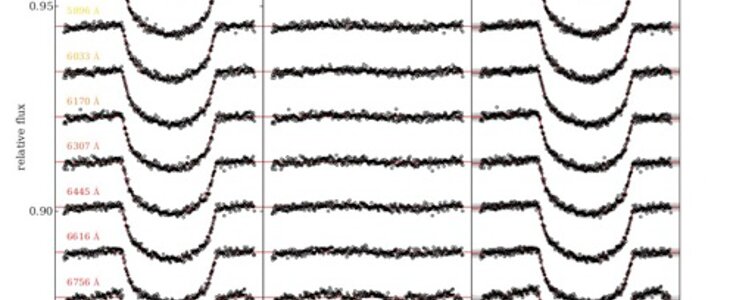Probing the Atmosphere of an Extrasolar Planet with Gemini South
19 November 2012
A group of British astronomers, led by Neale P. Gibson of the University of Oxford, used the Gemini Multi-Object Spectrograph (GMOS) to probe the atmosphere of a transiting extrasolar planet identified as WASP-29b. Previously, measurements of this sort were only possible from space, due to distortions from the Earth’s atmosphere. Now, thanks to advances in instrumentation and data processing, it is possible to perform these difficult observations using ground-based telescopes like Gemini. ESO’s Very Large Telescope was the first to attempt such observations and this work by Gibson et al. demonstrates the same extraordinary capability, and required instrumental stability, with GMOS on Gemini.
The study of exoplanets is a rapidly advancing discipline with more than 800 planets detected beyond our solar system so far. The first of these were detected in 1988 and about 600 have been found in just the last decade. Another 2000 are expected to be revealed by NASA’s Kepler satellite. While most exoplanets are found indirectly with the radial velocity method, a few planets are far enough from their star that they can be resolved spatially and thus imaged directly (see Gemini’s direct imaging discoveries: A Planet-like Companion Growing up in the Fast Lane and First Directly Imaged Planet Confirmed Around Sun-Like Star). However, both of these methods have their limitations and can provide only orbital parameters with limits on masses. In the case of direct imaging, observations are limited to the study of planets which are larger and much warmer than Jupiter and have orbits far enough from their host stars (or close enough to us) to be spatially resolved. However, to understand planetary systems more fully, and explore their diversity, we need spectroscopic measurements of their atmospheres; luckily, transiting planets allow such observations without requiring the star and planet to be spatially resolved.
Transmission spectroscopy is a technique that measures the effective size of the planet as a function of wavelength during a transit of the primary star. Due to wavelength dependent opacities in the atmosphere, the planet appears larger (and blocks more of the primary star’s light) at wavelengths where the atmosphere absorbs or scatters light. This property can be used as a probe for the presence of atomic and molecular species, as well as clouds or hazes in the atmosphere of the transiting planet. On October 19, 2011 Gibson and his team used GMOS in the multi-object spectroscopic mode to observe WASP-29b plus two comparison stars simultaneously, and continuously, for ~5 hours, covering the ~3 hour transit plus ~1 hour prior to ingress and ~1 hour after egress (see geminiann12014a). These simultaneous spectra allowed the team to acquire differential spectro-photometry and thus properly correct for atmospheric and instrumental effects which introduce noise in the measurements. With this, and after meticulous post-processing of the data, the team finally constructed a transmission spectrum from ~515 to 720nm of the atmosphere of the transiting exoplanet (see geminiann12014B).
The precision of the measurements reaches ~1×10−4 in transit depth, with the transmission spectrum free of spectral features. Given the non-detection of a pressure broadened Na feature, the authors rule out the presence of a sodium-rich atmosphere free of clouds or hazes. In addition, the orbital parameters of the system were refined and confirm that the planet is a hot-Saturn with about a ~970K surface temperature and orbiting at 0.05AU from its type K4 host star.
Links
- A detailed description of the post-processing methods and analysis of the spectra of the transiting Saturn-sized planet will be published by Monthly Notices of the Royal Astronomical Society and the preprint can be found here.
- A ground-based transmission spectrum of the super-Earth exoplanet GJ 1214b



